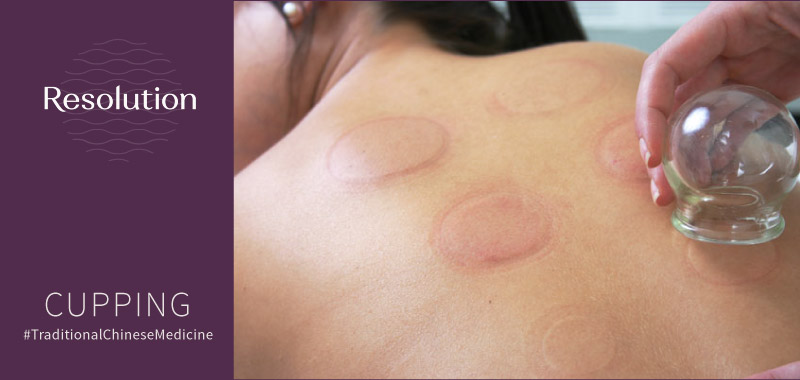Traditional Chinese Medicine = Acupuncture + Herbs (Right?)
WRONG! TCM has bodywork, exercise and diet components as well!
Cupping, one of the bodywork components of Traditional Chinese Medicine, made quite a splash during the 2016 Rio Olympics. Weightlifters, gymnasts, and swimmers (including Michael Phelps) were seen at the games with the signature round marks left by cupping. Unfortunately, some news outlets reported spotty or inaccurate information about exactly what cupping is, what it can do, and what exactly those marks are. Let’s clear up the confusion, because cupping can be an extremely helpful therapy, particularly for those with chronic pain!
Cupping is a type of deep-tissue massage; it uses small cups to create counter-pressure that works deep muscles and fascia. By lifting rather than compressing, cupping is able to facilitate movement of muscles, fascia and fluid in different (and very therapeutic) ways. Counter-pressure is created either by heating the air inside the cup before placing it on the skin (creating a vacuum when the air cools), or through use of a suction device on the cup.
As with many types of Alternative Medicine, cupping has a long history across many cultures, but is difficult to study using the standard double-blind control group model preferred by Western Medicine. There are studies on cupping (and the results are positive, check out the links at the end of this article!), but it would benefit from more comprehensive research, and has yet to gain widespread acceptance in the Western medical community. Many athletes and pain sufferers, however, have powerful firsthand accounts of how cupping has helped them.
One of the most misunderstood parts of cupping is the marks left by the treatment. The pink, red or purple circles left on the body after a cupping session are not “bruises,” as we typically understand the term. “Bruises” (or “purpura”) are marks resulting from trauma, resulting in subdermal bleeding, and they are often very sore. Cupping marks are closer to (don’t laugh…) a hickey, and the coloring varies depending on the type and amount of toxins that were released from deep in the muscles and surrounding tissue during the cupping session. TCM practitioners use the color of the markings as a diagnostic tool, because they reveal a lot about what is happening internally in that particular area. Cupping marks typically fade within 2-4 days, depending on the severity of the underlying issue.
Resolution’s cupping expert, Tim Schimick, finds cupping particularly beneficial for those with chronic pain or nerve pain, and he regularly uses cupping in addition to other modalities that work on deep-tissue muscle and fascia (including trigger point therapy, Myofascial Release and Structural Integration.) Cupping can be done as a stand-alone service at Resolution (in either a 15-minute or 30-minute appointment), or it can be added to a Therapeutic Massage session. As part of a Therapeutic Massage, Tim can also leave the cups to work on one area of the body while he uses other massage techniques on another area (so it’s like getting 2-for-1 treatment!)
Curious if cupping might be helpful for you? We’re happy to answer any questions! Reach us by phone (608-443-7048), email (Relax@ResolutionMassage.com) or in-person at our office (433 W. Washington Ave., Madison).
By Isabelle Spike @ Resolution
Interested in reading more about Cupping?
References from this article and further reading:
This NY Times article has some of the best coverage about cupping at the 2016 Rio Games:
“What Are the Purple Dots on Michael Phelps? Cupping Has an Olympic Moment.”
by Gretchen Reynolds and Karen Crouse
A Brief Overview, titled “3 Reasons Why Everyone Should Try Cupping”
https://www.mindbodygreen.com/0-16791/3-reasons-everyone-should-try-cupping.html
